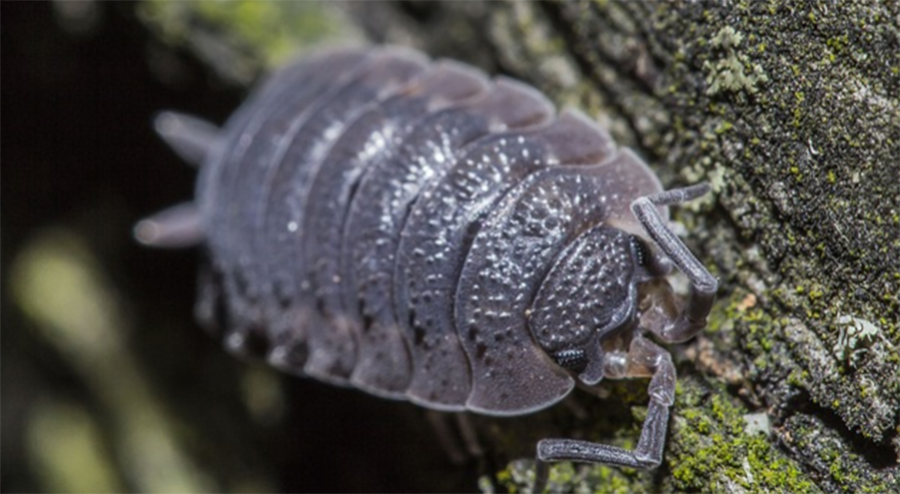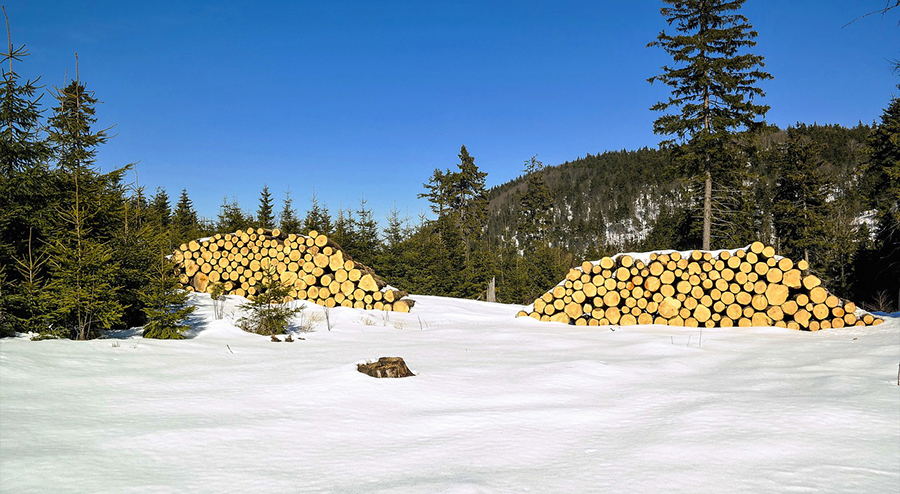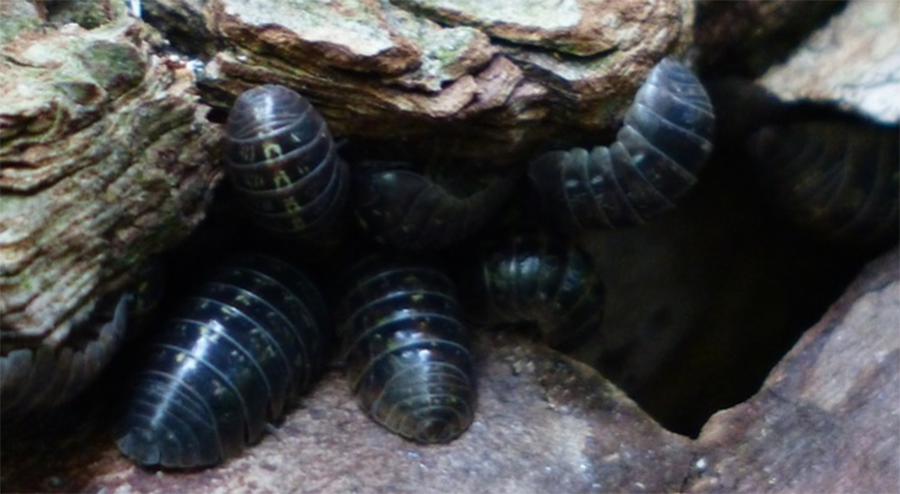What Do Rolly Pollies Eat?
Although this might sound strange to most people, there are people who actually consider rolly pollies to be interesting, low-maintenance pets to keep at home. Granted, some of us think of them as pests; rolly pollies, or pill bugs, make up some of those rare critters who tread the thin line between pest and pet; sort of like hamsters and rats. Maybe you have seen a few of them around your house and wondered, “what do rolly pollies eat?”
Scientifically known as Armadillidium vulgare, these isotopes are arthropods and have numerous common names, such as rolly pollies, sow bugs, the wood louse, pill bugs, pillbugs, rolly pollies, roly poly bugs, pill millipedes, potato bugs, and poly bugs, aren’t that fussy about what they eat. They can eat pretty much anything you put in their path. These crustaceans particularly enjoy feeding on decaying matter such as leaves and grass. They can even live for more than five years on this stuff. That makes them kind of difficult to starve, don’t you think?
Whether you want to keep rolly pollies as pets or want to get rid of them, you need to know what it is they eat so you can plan a proper eradication course. You also need to know when they are most prevalent (during winter months) and they main breeding habits as well as habitat and characteristics. Here is a quick rundown on what rolly pollies eat and how you can get rid of them if you choose to do so:
What Are Rolly Pollies?

In order to survive, these crustaceans need a moist environment, some dirt or rocks under which to take shelter and, of course, something to eat. Although when it comes to the ‘something to eat’ part, pretty much anything will do for these critters.
Even cardboard boxes! They particularly like to eat organic matter such as rotten fruit, dead plants, and also things like carrot and apples as well as potatoes. They are typically referred to as rolly pollies because they tend to roll up into a tiny ball when they feel threatened. The ‘pill bugs’ reference probably stems from the fact that once they are rolled up into their little ball, they look like tiny pills instead of living creatures.
What Do Rolly Pollies Eat?

- Apple skins
- Grass
- Carrots
- Plant roots
- Tree bark
- Lettuce
- Potatoes
They are particularly fond of rotting food that is well on its way to decaying. If you intend to keep these critters as pets, then make sure that the food is rotten before putting it in their habitat. Although, as much as these critters survive of decaying matter, moldy food poses a danger to their lives. Strangely enough, rolly pollies cannot safely process moldy food and often die off when exposed to such sources of sustenance.
What About Water?
As crustaceans, these critters have gills that allow them to get the water they need from the moisture within their habitat. That is why open water sources pose a danger to these little buggers. Any open water source is a potential drowning hazard for rolly pollies. For that reason, rolly pollies do not live in ponds or swimming pools; they live in moist environments such as mulch beds and damp soil. They can typically be found curled up under fallen vegetation, wood, and rocks.
Are Rolly Pollies Pests?
The answer to this question will depend on how you view these creatures.
As this tweet shows, some people think of them as a precious commodity:
https://twitter.com/ericasplund/status/918214036239634432
As we mentioned, some people actually keep them as pets. If you are, however, not one of those people, then you can view them as pests to some extent. The main reason for this is that, although rolly pollies typically feed on decaying matter, come winter time when their food runs out, they can turn on the roots of your plants. If you are a farmer, this is not something you want hanging around your property. Anything that can turn plant roots into a meal is bad for business.
Additionally, rolly pollies will easily snack on vegetables and fruits growing in your garden. Avid gardeners do not take this sort of thing lightly, especially when they begin to destroy entire orchards just to survive. That being said, rolly pollies can also be a major ally when it comes to managing stink bugs. These bugs tend to damage plants by feeding on their juices both internally and externally. Rolly pollies, on the other hand, feed on stink bug eggs thus keeping their population down and saving your plants in the long run.
Rolly pollies also take dead matter and decompose it thus providing invaluable nutrients to the soil around their habitats. In reality, rolly pollies do more good than they do harm. But, as we mentioned, it is all a matter of perspective. Are you willing to let these critters roam freely on your land decomposing dead matter or do you think the fact that they could eat plant roots is a deal breaker?
Strange Facts You Need To Know About Rolly Pollies
We have already covered the fact that they are not exactly insects and that they may or may not be harmful to your property depending on the hunger situation. Here are some other facts that you may find interesting about rolly pollies:
Rolly Pollies Breathe Through Gills:
To most people, this will not make sense because creatures that breathe through gills live under water. The problem here is that although pill bugs do breathe through gills, they will actually drown when submerged in water. As crustaceans, they survive best in moist environments where they can suck the moisture from their surroundings to stay alive.
Rolly Pollies Turn Blue When Sick:
Rolly pollies will turn a bright blue color when sick. If you see a lot of these critters turning blue in your garden, it is often an indication that something is going around. You should, therefore, keep an eye out for your plants.
Rolly Pollies Can Actually Be Good For Your Garden:
They are mainly decomposing machines that can bring life to your garden. The fact that they eat almost everything in their path and only turn to plant roots in the direst of situations is a testament to their being useful if kept well-fed. They also act as good pest deterrents by eating off any stink bug eggs that might be found in your garden.
The Benefits Of Keeping Rolly Pollies

How To Get Rid Of Rolly Pollies In Your Garden
If, however, you have decided that having these little critters around is not in your best interest, then there are some steps you can take to get rid of them. Here are some of the best tips to get rid of rolly pollies:
Get rid of or reduce their habitat: One of the fastest ways to get rid of any pest is to eliminate their habitat and food source. Rolly pollies live in garden debris, moist logs, under rocks, and thrive on fallen fruits, weeds, and dead leaves. Get rid of all these aspects, and your property will quickly become untenable for rolly pollies. They will either die off or move along.
Useinsect killer granules on your property: Another excellent way to kill off almost all types of pests is to apply insect killer granules. This will kill off most types of insects and pests including rolly pollies.
Improve air circulation by raising plants: You can easily improve air circulation around plants by constructing trellises for vines as well as raising fruits off the ground. This will deny rolly pollies the moist and damp environment they need to survive as well as keep fruits out of easy reach.
These are simple and straightforward methods that you can use to minimize the number of rolly pollies on your property.
Ultimately, however, if you want to make sure that you have made your property as pest-proof as possible, then you should call your favorite pest management professional. Not only will we get rid of rolly pollies for you, but we will also make sure that we’ve analyzed all other possible pest infestations that might be building up on your property and giving you the most practical course of action. Give us a call today and let us help you pest-proof your property.
Sources:
https://www.thriftyfun.com/Caring-for-Rolly-Pollies-Pill-Bugs.html
https://www.h2ouse.org/what-do-rollie-pollies-eat/
https://robinsonloveplants.com/what-do-rolly-pollies-eat/